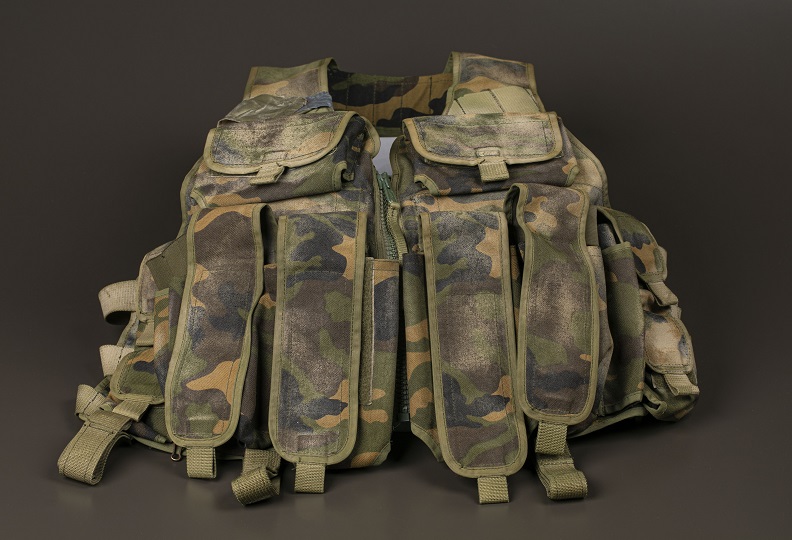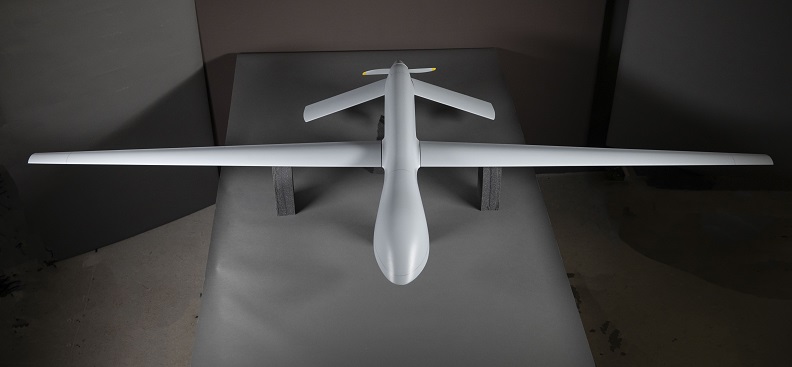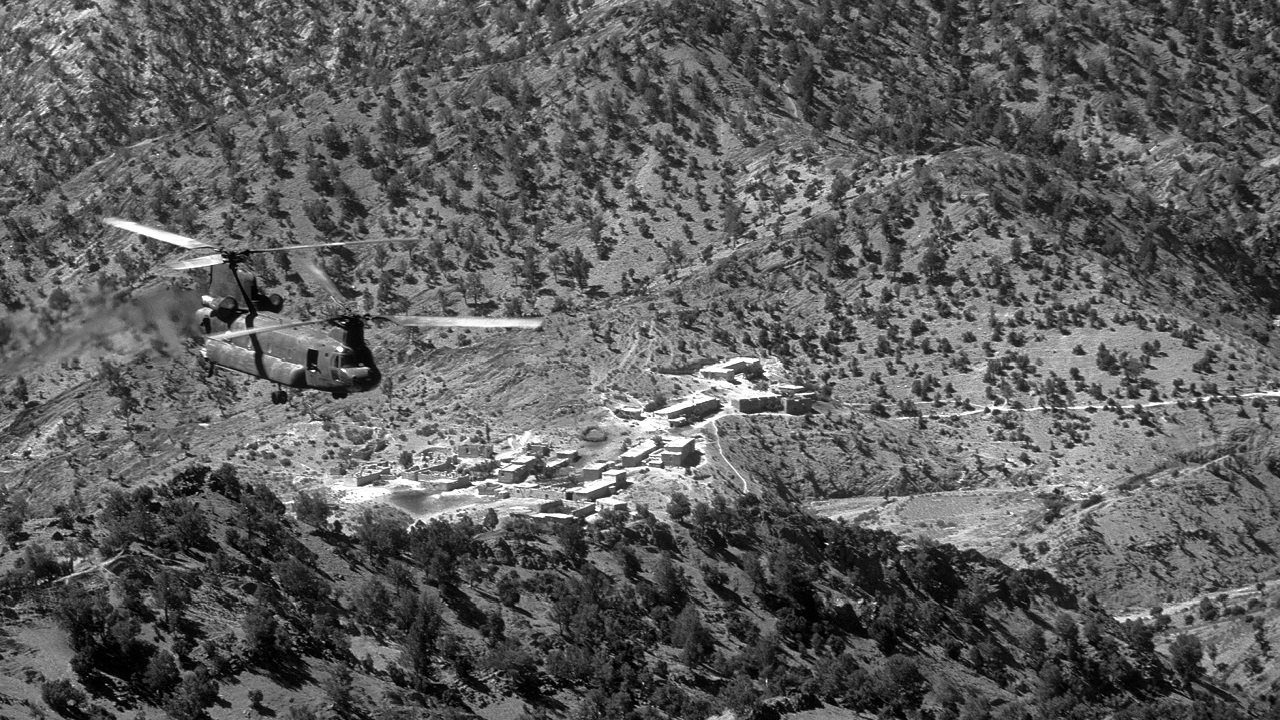The Counterterroism Toolkit
New methods incorporating drone surveillance and targeted ground operations emerged during the 10-year hunt for Osama bin Laden.
After 9/11, counterterrorism efforts focused on disrupting entire terrorist networks. U.S. military and intelligence officers continued to build alliances with local informants who risked their lives to help the U.S. gather intelligence on al-Qaeda. The informants also attempted to block the terrorist group from creating sanctuaries in Afghanistan from which to operate freely. To facilitate these relationships, American forces recruited linguists and local interpreters and used translation tools. They also dressed in regional clothing or nondescript uniforms to mask their nationality.

Utility vest worn by a Defense Intelligence Agency clandestine collection operator working with Afghan allies to gather information on Osama bin Laden and al-Qaeda. Courtesy of the Defense Intelligence Agency (DIA).
As part of the new integration of intelligence, federal law enforcement, and military capacities spurred by 9/11, military officers trained for tactical site exploitation, a process of identifying, collecting, protecting, and evaluating materials of intelligence value. American forces also were instructed in photographing captured or killed suspects to piece together evidence of terror networks.
Raids on suspected terrorists unfolded in rapid succession, each one utilizing intelligence gathered from previous missions. Operations tempo, the relentless pace of assaults on terrorist networks, defined this strategy. As intelligence agencies exploited vulnerabilities, terrorists were kept on the defensive, more concerned with survival than attack.
Over the course of thousands of raids, armed forces and analysts sharpened methods for fighting terrorist networks: a target was identified from gathered intelligence; an operation was planned and executed; and the scene was searched for individuals and items of intelligence value. Newly collected intelligence was analyzed, in turn producing new targets.
alt
Read a transcript of General Michael Hayden’s remarks.
Drones expanded military and intelligence options, quickly becoming an essential part of the American arsenal. By enabling uninterrupted surveillance, drones provided a more detailed understanding of a site or moving target than satellites or manned aircraft could deliver. Initially unarmed, after 9/11 drones were armed and used to attack enemy combatants without employing ground troops.

Model of Predator drone used to collect surveillance imagery for intelligence analysis. Courtesy of General Atomics.
These strategies guided the continuing hunt for bin Laden. Intelligence analysts believed he would maintain contact with al-Qaeda from an urban hideout. They thought bin Laden would communicate through trusted aides while living quietly with his family. Their theory of how bin Laden might be living gave analysts a sense of how to exploit his vulnerability, whenever a credible lead emerged.
